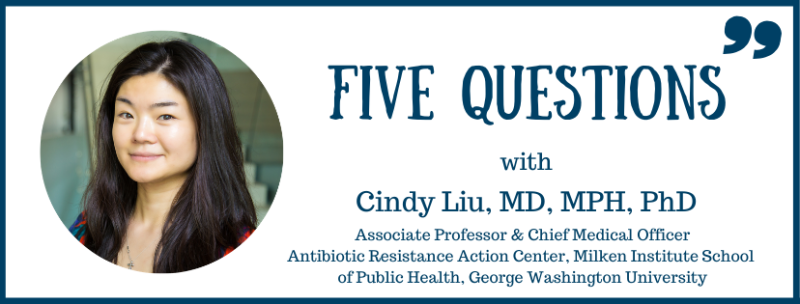5 Questions: International Research Consortium in Iceland
1. Will you tell us about how this collaboration was conceived and why it is so important?
At our center (Antibiotic Resistance Action Center), it is very important to us that we use research to identify ways to control the worsening and spread of antibiotic resistant bacteria. This mission led us to look at Iceland as a place where we can build some key knowledge that would be impossible to get elsewhere, where the systems are too complex and opaque to fully understand the sources and spread of bacteria in the environment and in people. Our vision is that this will give us the foundation needed to study and better understand the ecology of E. coli in more complex systems that have greater antibiotic-resistant infection burdens in other parts of the world. This study adopts a One Health lens to study antibiotic resistance in Iceland.
2. What is One Health, and why is it essential to understanding antibiotic resistance?
Studying antibiotic resistance from a One Health perspective is very important. The One Health perspective recognizes that the health of humans, animals, and plants are inextricably linked and to study a problem as complex and as important as antibiotic resistance will require people like physicians, veterinarians, ecologists, and other health professionals to come together and pool their respective expertise. To study and tackle the issue of antibiotic resistance will require big thinking and interdisciplinary teams.
3. Why was Iceland chosen as the country/nation of interest in this study, and what unique characteristics make it ideal for the study of factors influencing rates of antibiotic resistance?
Not only does Iceland have the lowest antibiotic-resistant infection rates in the world, it is also geographically separate from other European countries and produces much of its own food. By working with key partners such as the Landspitali Hospital, we can begin to map out how an important opportunistic pathogen, Escherichia coli, or E. coli, from various environmental reservoirs (e.g, food animals, meat/poultry, water) spillover to causing human infections. This is important because we do not know how antibiotic uses in non-human settings affect antibiotic resistant infections in humans. However, there are also some potential threats in Iceland. For example, Iceland’s ban on importing fresh meat, as well as it’s tourism industry that brings over 2 million foreign visitors to the country each year--it’s important to understand how these factors could impact their remarkably low rates of antibiotic-resistant infections.
4. How can the findings from this study be used to guide policymakers on making decisions about legislation regarding antibiotic use in the U.S. and other countries?
It’s very important to policymakers that we identify the most effective points and methods of intervention that could prevent new antibiotic-resistant pathogens from arising and reduce their spread. This study will allow us to advance our understanding of how factors such as person-to-person transmission and transmissions from animals and food to humans contribute to the emergence and spread of antibiotic-resistant bacteria. This will be very important for developing evidence-based policy.
5. Can you tell us about the consortium and what expertise each of the partners brings to their role in the study?
This study is led jointly by the Antibiotic Resistance Action Center at the George Washington University and Landspitali, the National University Hospital of Island. Other consortium partners include the Institute for Experimental Pathology at the University of Iceland at Keldur, the Icelandic Food and Veterinary Authority (MAST), and MATÍS at the University of Iceland. We have worked together in the past several years to discuss how we would sample and collect E. coli from different sources, we will continue to meet and hopefully soon, discuss the results when we have them.


